"Invisible City" also has practical significance that she can see
Calvino stated in a lecture at Columbia University's Master of Writing class in New York on March 29, 1983 (preface to the book):
From a friend who is an urban planner, I heard that this book touches on a lot of their problems, and it's not an accident because the background is the same.
The original Italian edition of Italo Calvino's Invisible Cities was published in 1973, and it has remained an important literary reference for architects and urban planners ever since.
For a long time, the main narrative object of classic fictional literature is "people", and "city" is just a background plate for the movement of characters and the occurrence of stories; and a remarkable unique feature of this book is that it puts "" "City" as the subject in front of the stage, and "people" as auxiliary materials for explanation.
These cities are not real cities, they are Calvino's fantasy, fiction, and invisible. Each city is named after a woman who makes up the chapters of this book.
It may be worth pointing out that these fictional cities are not purely imaginative games, as they are still images of cities transformed from Calvino’s embodied experiences and experiences. In a discourse space in the book, the answer to this mystery has been clearly revealed, these "invisible cities" actually come from different sides of Venice , but these sides have been rendered and enlarged.
"There's one more thing you never said."
Marco Polo bowed his head.
"Venice," Khan said.
Ma was funny. "Do you think I've been talking about something else?"
It is obviously rude to only mention the "realistic meaning" of "Invisible Cities". Calvino's poetic words have successfully captured a modern feeling of urban living, which is full of nostalgia, which is both indescribable and fleeting. Passing away, although in writing, is often shown in the form of a playful and mechanical "set".
On this basis, we realize that this personal feeling does lead to some broader issues, namely, the disease in the process of global urbanization. Undoubtedly, many urban scholars and architects saw in it the urban issues we are still studying then and now, and this book provides us with an opportunity to think about existing cities.

Calvino's writing not only brings us countless inspirations for imagining cities, but also guides us to find the "fantasy" elements that exist in cities now.
Calvino's "Invisible City" was written in 1972-1973. For architects and urban designers, the 1960s and 1970s were a "big era" that was very pioneering and dared to dream. The spatial thinking and design thinking of these buildings have left a deep influence on Calvino. While accumulating writing material, Calvino came into contact with the modernist master Le Corbusier's unbuilt Venice hospital project in Paris, as well as Richard Rogers' uniquely shaped Centre Pompidou.
In Italy, radical architecture groups Superstudio and Archizoom reflect on urban sprawl and homogenization under capitalism through a series of buildings on paper, Archigram, Yona Friedman and Buckminster ·Buckminster Fuller uses technological innovation to imagine free and light emerging cities - these also affect his understanding and imagination of cities more or less. On a more implicit level, the choice of the story background and the construction of the novel structure of "The Invisible City" also fully reflect Calvino's profound understanding of "architecture".
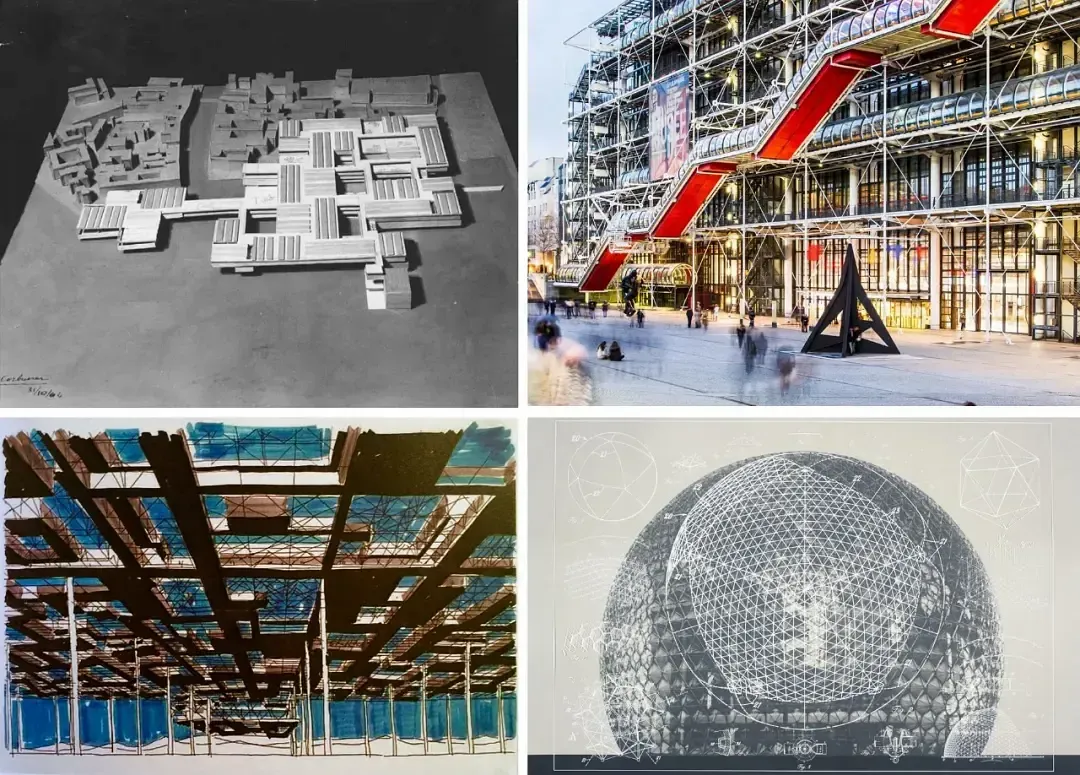
In this book, the scheduling of space is reflected in three dimensions: discourse space, story space, and chapter organization.
"Beside the warm fire, Jones told Mary the thrilling story of his adventure in the North Pole..."
For this phrase, "by the warm fire" is the "discourse space" - the place where the narrative action takes place, and "the North Pole" is the "story space" - the place where the event takes place.
For Invisible Cities, we have 55 wonderful and magnificent cities as the main narrative objects, and these are presented by Marco Polo as he tells the "Emperor of Tatar" Kublai Khan. Then, the former is the story space, and the latter is the discourse space. The two are constantly intertwined and interspersed during the reading of this book, and this interspersed and organized way is what we call the third point of the dimension, "the organization of chapters".
1. Discourse space
At the beginning and end of each chapter, Kublai Khan questioned, commented on, or discussed the city in the story with Marco Polo. At this time, Calvino takes the reader from the "story space" back to the "discourse space". The author not only describes the content of the conversation between Marco Polo and Kublai Khan, but also describes the place and state of the conversation. This prompts the reader to think about the authenticity of the city as told by Marco Polo, and the authenticity of the language spoken.
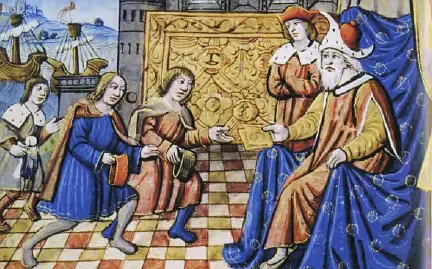
1.1. At the beginning and end of almost every chapter, Kublai Khan questioned the existence of these cities.
In the first chapter, Calvino recounts that Kublai Khan possessed a vast territory, but realized that his empire was just a "ruin without end and shape", and he could not really know and understand the territory he possessed. And Marco Polo reported that although it is just someone's idea of taking the cool of the night or a reconstructed city of some urban elements, they have a "symbolic power" that makes people unable to forget and confuse them. This constantly reminds the reader to think about the symbolism of the city in the story.
1.2. These discursive spaces also keep us thinking about the authenticity of the language described by Marco Polo. At the end of chapters 1 and 2, it is mentioned that Marco Polo used objects and performances to explain when he initially did not understand the oriental language. There is "an unfilled space" around these objects and events, and as he gradually mastered the Tatar language, the narration, although precise, is "less pleasant", so they still have to perform a gesture each time "Silent Comments".
2. Story space
2.1. "East" and "Elsewhere"
The novel is structured on the basis of "The Travels of Marco Polo", it is the latter who created a concept of "Oriental" for Western civilization; here, "Oriental" represents a fantasy and exotic city landscape. Of course, this is not the relationship between "East" and "West" in a real space, but the relationship between "here" and "elsewhere", and the relationship between "reality" and "imagination".
2.1.1. These "elsewheres" are essential for creation and imagination. In his lecture, Calvino mentioned that works such as "The Travels of Marco Polo" and "One Thousand and One Nights" are like "imagined continents", which are the spatial basis for subsequent writers to carry out literary creation.
2.1.2. Wu Hung made such an interesting observation in "The Story of Ruins": There were two popular decorative buildings in European gardens in the 18th and 19th centuries, one was man-made ruins, and the other was "the oriental architecture". fanciful imitation". For him, the relationship between the two underscores the notion that the ruins of ancient Greece and Rome are solemn, evoking a heavy sense of history and contemplation, while the oriental architecture is exotic "the whimsical style of novelty". In the West, "East" has always been an interesting and fantasy space concept of "elsewhere".

Today, this "elsewhere" with its quirky and fantastical qualities has all but disappeared. The public account "Curiosity Daily" once wrote in the article "Have you become a carrier of the gentrification aesthetic virus? ” (click to jump) quoted this statement:
The French anthropologist Marc Augé once called airports around the world that look more and more like non-places, saying that they are "non-places" that have no uniformity of personality, are isolated from the surrounding and cannot give people a sense of history. There are more and more "non-places" like this that are spread all over the world but are remarkably similar.
About 50 years ago, Calvino, as a keen observer and thinker, had already sensed this looming problem - "the whole world is converging", "it can be said that nowhere else exists".
The disappearance of "elsewhere" is on the one hand the disappearance of a fantasy world, and it is also a problem and challenge faced in architecture and urbanism, namely the increase of population, urban expansion and homogenization. In "Invisible Cities", Calvino's writing often reflects a kind of lamentation about this phenomenon.
2.2 The continuous city
The five chapters of "Continuous City" appearing in the second half of the novel describe a "world that is moving towards unity". Calvino himself said, "The megacity, the continuous single urban picture also rules my book".
2.2.1. This continuous and single image of the city is a kind of "catastrophic allegory", which is a reflection on the destruction of the natural environment, the gentrification of capitalism and the superstition of technology.
2.2.2. The Dune Institute has mentioned many cases in its articles before, such as "Continuous Monument" by the radical architecture group Super Studio in the 1960s and "Non-Stop City" by Archizoom. )", all ironic depictions of mega-successive, single urban landscapes. Super Studio's earlier "Twelve Christmas Warning Tales" described 12 dystopian futuristic cities, all of which also had an impact on nature. , a reflection on capital and technology.
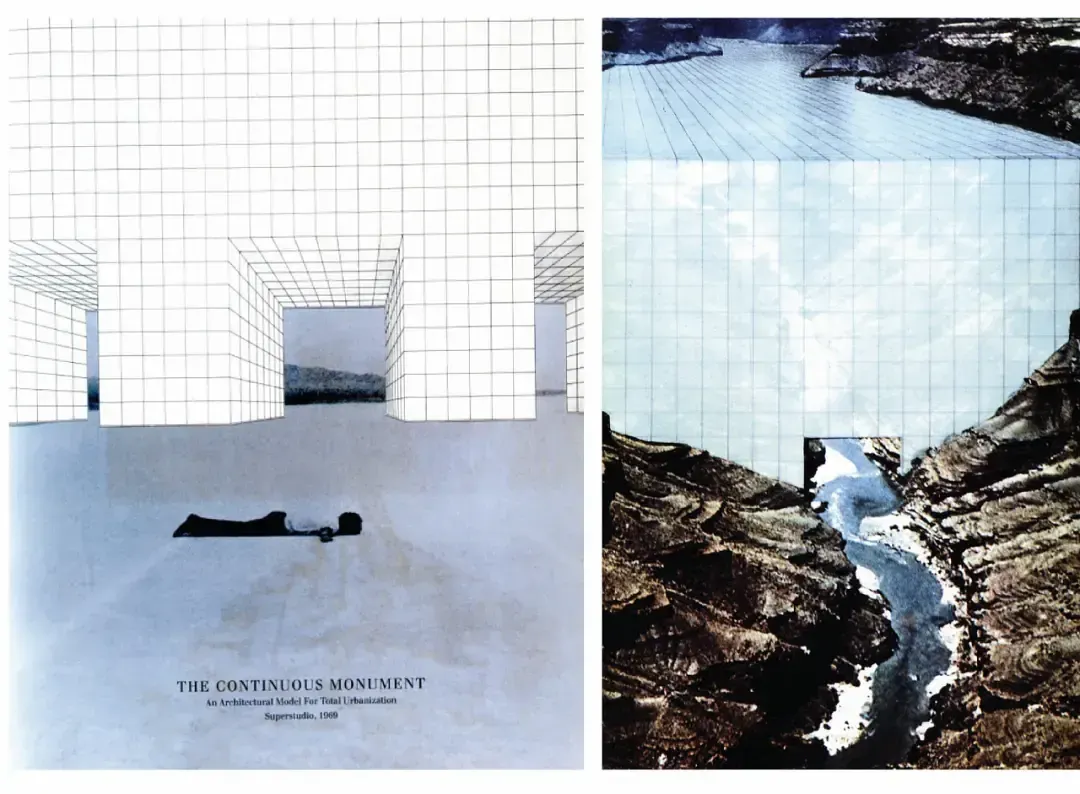
2.2.3. "One of the Continuous Cities" describes a world where constantly renewed cities pile up garbage on the outer edges of cities. As cities expand, garbage is constantly moving outward, gradually encroaching on the world.

2.2.4. Trude in " Continuous City II" is a conception of a gentrified world. The city has the same houses, road signs, squares, flower beds, and the same wares, decorations and signs on the streets.
Visitors who come here can leave at any time, but they will only arrive at another Trude. Although a fictional city, Trude is a strong reference to what is now the suburbia of suburban America. In California, such satellite cities full of middle-class single-family villas are everywhere, and this "American Dream", homogenized and replicated urban image has also been transmitted to all parts of the world through mass media. On the outskirts of Beijing, we also see eerie copies of this picture.

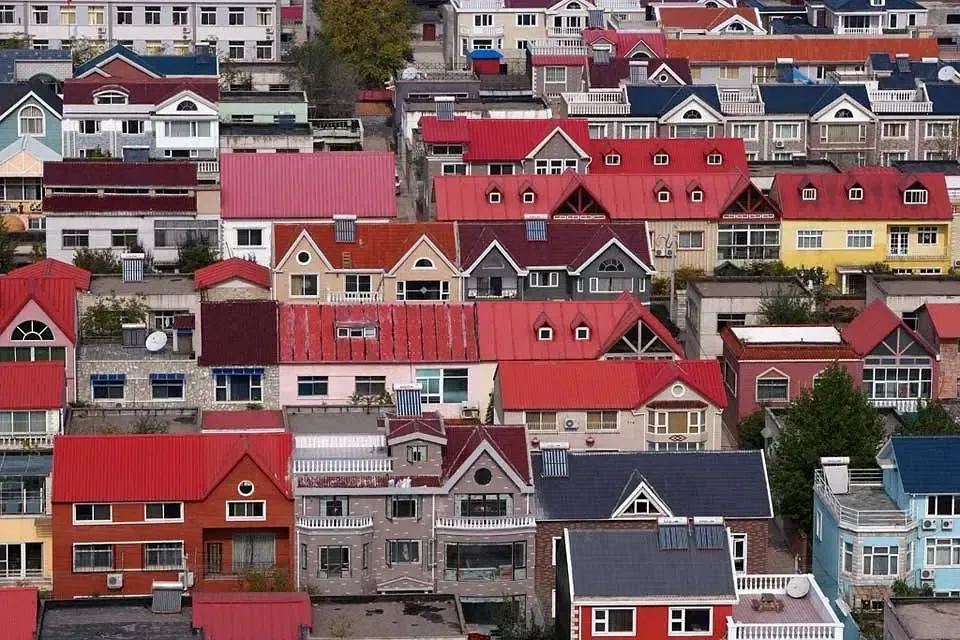
Different from the pure criticism of many contemporary architectural and literary works, "Invisible City" is not a simple "disaster prophecy", but, as Calvino himself said, is "the last love poem dedicated to the city". . Calvino is aware of the crises that are taking place in modern cities, and through this novel he wants to find "secret reasons for people to live in cities" that can overcome all crises. The monotonous metropolis only appears later in the novel, and in the beginning we see the city as a whole of many things, as a collection of memories, desires, symbols, and so on.
2.2 City and memory
2.2.1. In the chapter on Cities and Memories, there are many such scenes, the colorful lights at the door of the fried food shop, the sloping eaves gutter and the cat that slips into the window along it, the striped curtains of the barber shop and the cafe on the corner . The city images in these memory fragments are meticulously recorded.
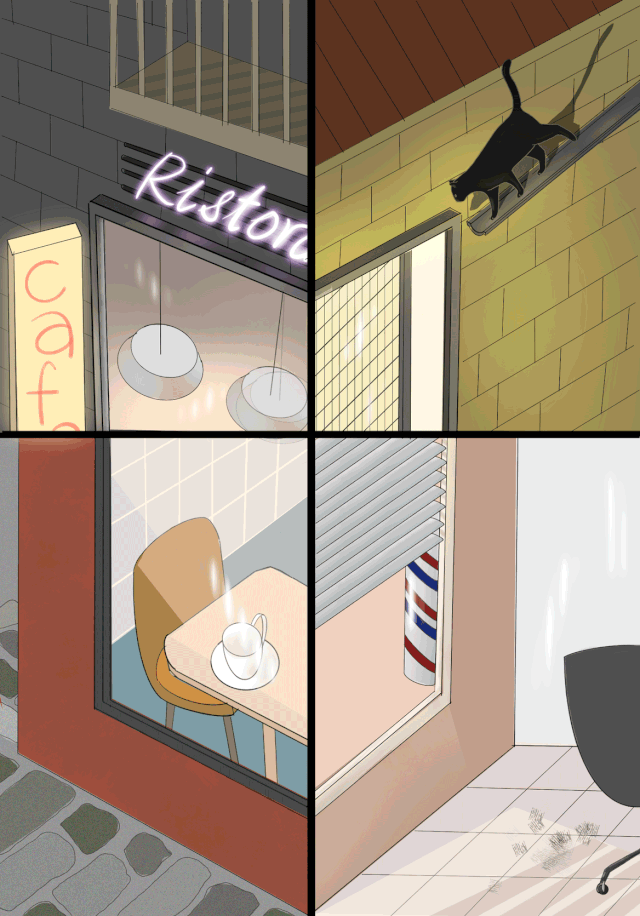
2.2.2. The city itself contains its entire past, and people's memory is occupied by space. Those things that have been lost exist in the traces of the guardrails, handrails and other things that have been chiseled. People can store the things they want to remember in urban streets, houses, doors and windows, etc. These urban spaces help people evoke memory.

2.2.3. The relationship between memory and space is often mentioned in the practice and theory of the contemporary architect Aldo Rossi. He proposed the concept of "image city", that is, the image existing in people's memory is more "real" than the actual urban space.
The Venice that Canaletto once painted is such a Venice of "intention" rather than "real". There isn't a single Venetian building in the painting, but it does contain Venetian intent - a beautiful Renaissance building on shimmering water. This confirms Rossi's "image city", because the fictional and ideal buildings that exist in a real scene constitute a more vivid Venice than the real city.

2.3. Light City
Between these ruined, chaotic, continuous, and homogenized cities, there are also some abstract and illusory "light cities", which are more imaginative than others. These cities also seem to share many similarities with the urban visions of "metabolism" Japanese architects, Archigram, Yona Friedman and Buckminster Fuller.
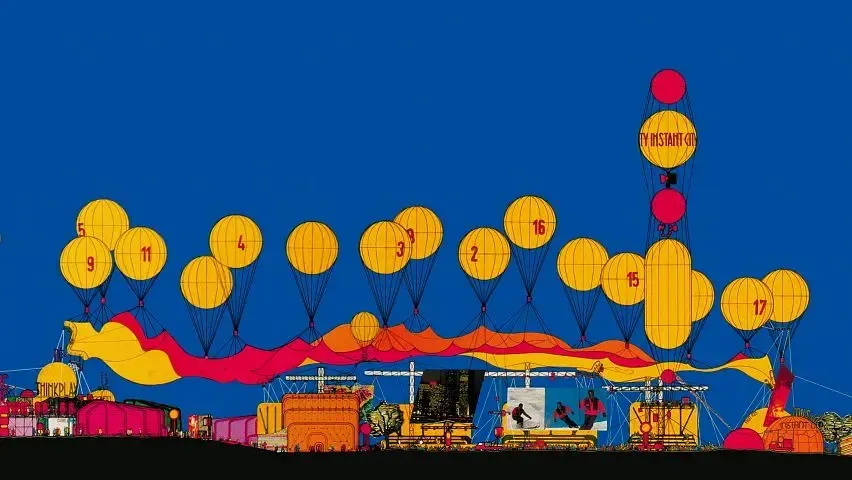
2.3.1. In the midst of a light city is a city of a thousand wells, where buckets, windmills, pipes, canals, everything moves upward.
In another city, Zenobia, built on stilts, linked houses by ladders and hanging corridors. This has many similarities with Isozaki's City in the Air (1960) and Yona Friedman's Spatial City (1958-59).

2.4. Hidden city
Calvino mentioned that the two series near the end, The Rolling City and The Hidden City, were intentionally designed. These two series express a clear intention in the work. I think that if "Continuous City" is a critique of modern urban problems, "Hidden City" is a reflection.
2.4.1. Every city in the "hidden city" always has an opposite "hidden" side behind its superficial features. In Lesa, for example, the whole city seems to be full of misfortune and nightmares, yet "this unfortunate city contains a happy city every moment, and she herself is not aware of her own existence."
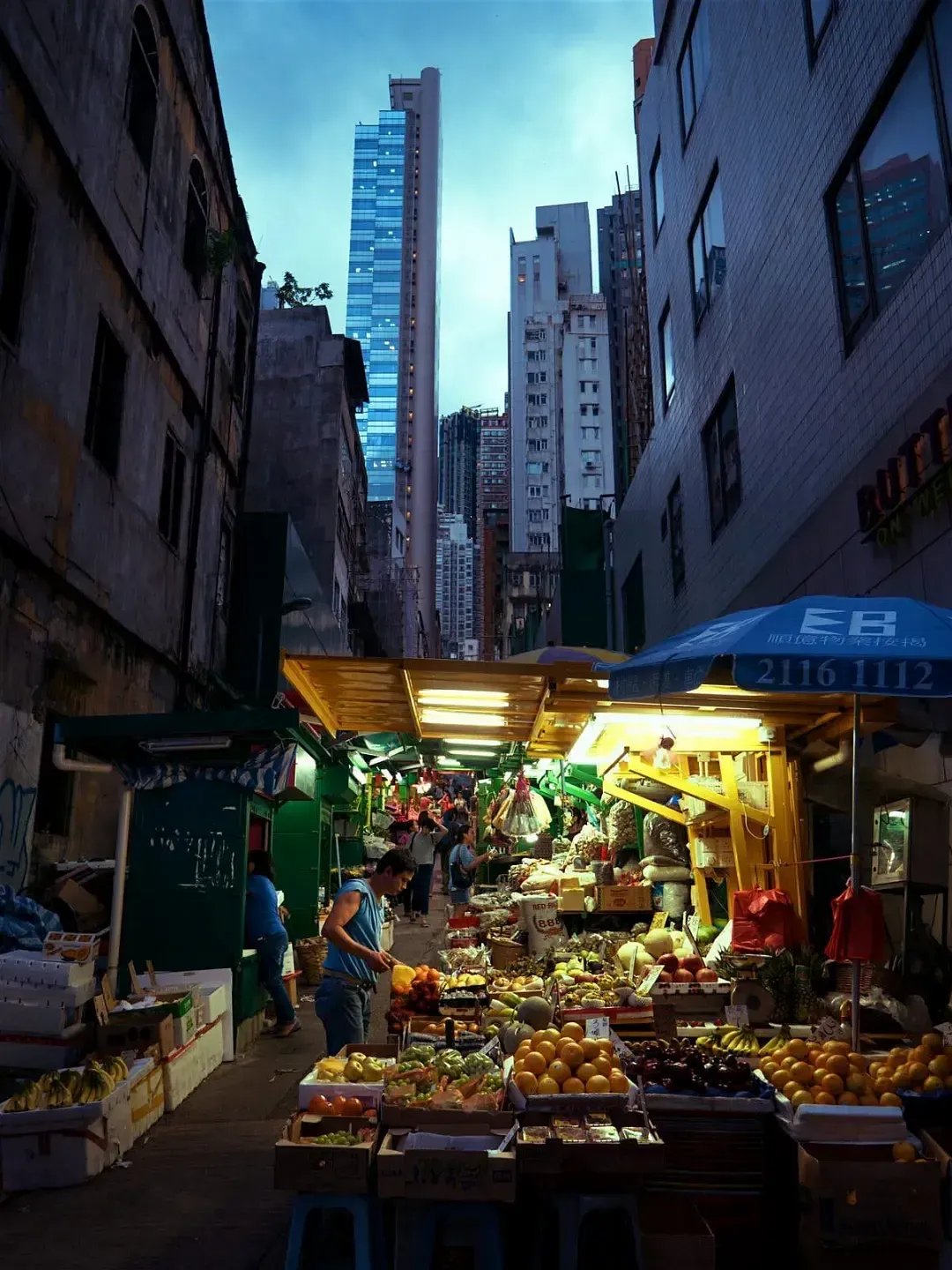
2.4.2. All cities are utopias and hells at the same time, and they comprehensively and holistically represent the people and things that come together. At the end of the last chapter, Marco Polo finished the fifth "hidden city", saying to the Khan:
There is no hell for the living; if there is, it is already here, the one in which we live every day, the one we have assembled together. There are two ways to fabricate pain, the first is easy for many people: accept hell and become a part of him until you don't feel his presence; the second is risky and requires constant vigilance and learning: in hell Find people and things that are not hell, learn to identify them, keep them alive, and give them space.
3. Chapter organization
3.1. The content of the novel is the accumulation of some accidental inspirations and experiences of Calvino. He records the books he reads, the exhibitions he sees, and the conversations with his friends, which are eventually transformed into images of the city. But for Calvino, simply stacking them together doesn't make a book. The way they are put together and the structure is thought out and carefully designed.
3.2. Calvino's definition of a book is almost the same as experiencing a building:
A book is something that begins and ends again, a space into which the reader has to enter, move around in it, maybe get lost in it, but at a certain moment find an exit, maybe multiple exits , find a possibility to open a way out.
So, it's not a novel that's completely devoid of plot and narrative, it has a structure. In this structure, readers can discover the plot by themselves, create a story by reading, and even reach a conclusion.
3.3. "Invisible Cities" is not intended to create complex structures, in fact, it is a structural design that is as simple as possible to form an intertwined structure.
3.3.1. The novel has a total of 55 cities, divided into 11 series, each series has five segments, which appear alternately. A simple understanding of this structure can be understood as A1, B1A2, C1B2A3, D1C2B3A4, ... If we express this structure with an image, it forms a diamond-shaped network.


3.3.2. The nine chapters of the novel divide this diamond-shaped structure horizontally, that is, the first and ninth chapters of the novel have ten cities, and the seven middle chapters each have five cities. In this way each series is connected to the "discourse space" of the novel (that is, the beginning and end of the chapter).
3.3.3. In this network, each city is defined by series, numbers, and chapters to distinguish it from other cities, and likewise, they form distinct from other cities belonging to the same category, number, or chapter. connect. Thus, in this web, we can choose from an infinite number of reading "paths".
3.4. In the narrative, the time is deliberately ignored or disrupted, which allows the reader to arrange the plot and narrative by reading without affecting the understanding of the content. Like a museum with multiple entrances and circulations, the visitor will make the necessary connections to the objects seen through his own path. Or a piece of music, the performer can play the same movement through different rehearsal methods.
3.5. This open structure also makes the story into some elements that can be deconstructed and reorganized, which is similar to Kublai Khan's understanding of the city, that is, the city described by Marco Polo is only a few elements different combination. In the end, Marco Polo also said that the light in the thick fog and a dialogue of meeting passers-by can be the starting point. A perfect city is a mixture of remaining fragments, moments separated by intermittent and unknown who is accepting. signal of. This system also applies to language, because the structure of language (grammar, syntax) organizes concepts into a string of words.
The writing of this article is strongly related to a previous dialogue activity. In preparation for the activity, we reread "The Invisible City", and the subsequent text draft also prompted us to sort out our scattered thoughts and write this. Article.
Click the text below to jump to:
Like my work? Don't forget to support and clap, let me know that you are with me on the road of creation. Keep this enthusiasm together!

- Author
- More